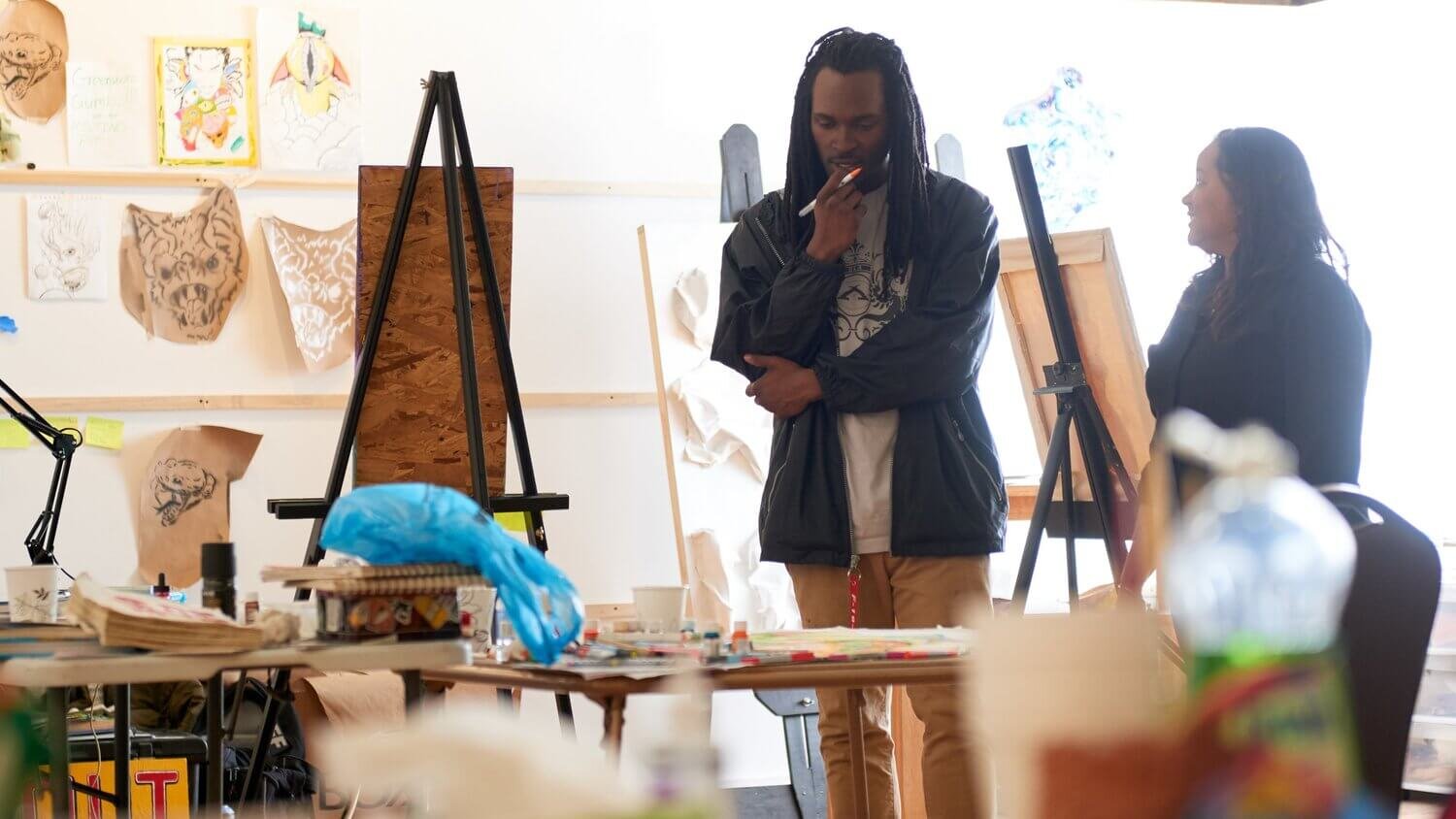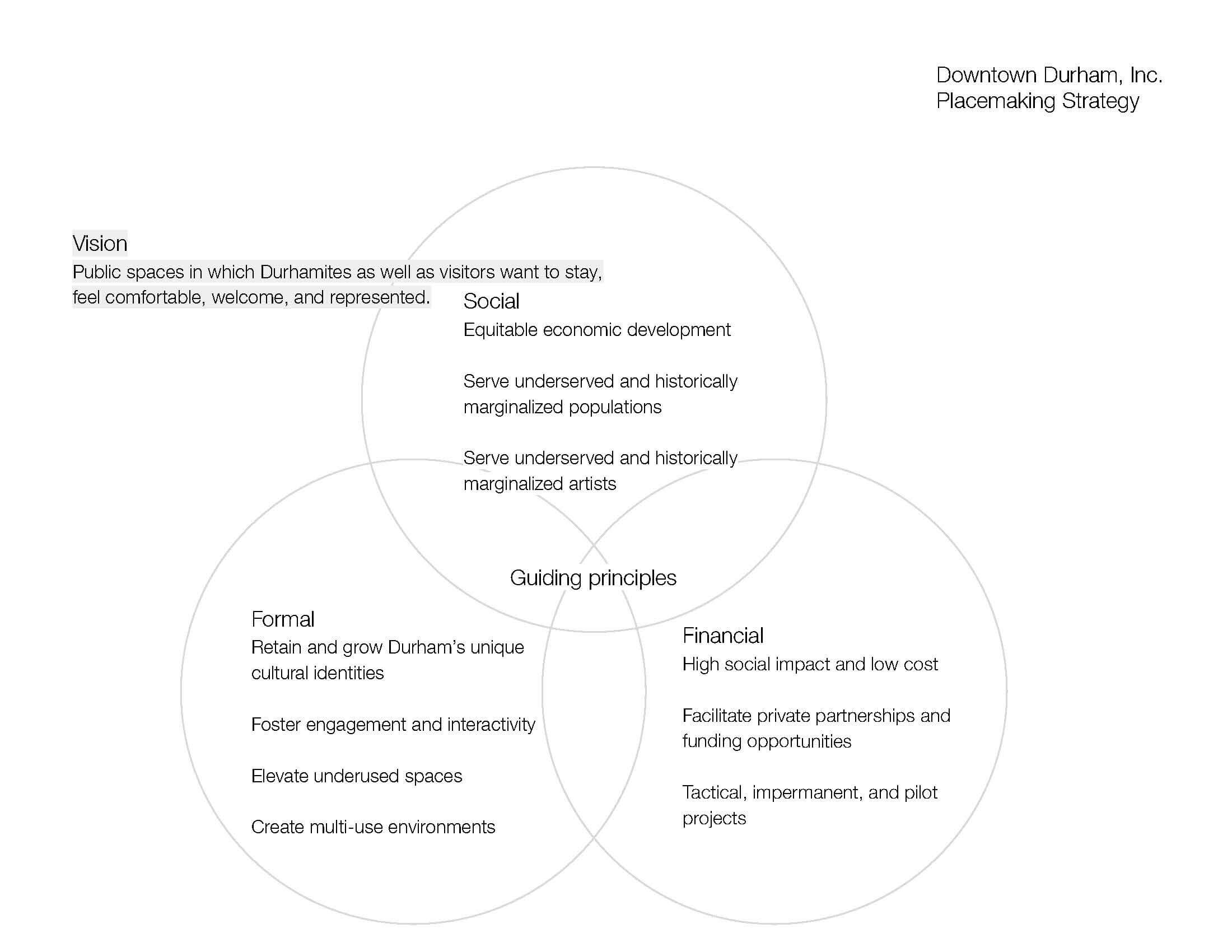Policy: The AirRev Artist Residency Program
was produced to support emerging artists and strengthen the Greensboro art ecosystem. Master’s Thesis research derived from case studies of community-engaged art residencies was applied directly to the program development process.
Project Highlights
The AirRev Program applied research insights and observations to practice. The pilot program:
Promoted collaboration, networking, and exchange between emerging and established Greensboro artists;
Supported painters, poets, filmmakers, and other artists from diverse mediums;
Strengthened the curriculum vitae of 10 emerging local artists; and
Was produced as a companion to Stein’s Master’s Thesis “Catalyzing Social Change Through the Arts,” selected as the Best Master’s of City and Regional Planning Project in Economic Development from the University of North Carolina, Chapel Hill.
Produced for: Self Help Credit Union
Location: Greensboro, North Carolina
Year: 2016 - 2017
Role: Program Director
It’s really inspiring to be around so many different types of artists….It’s about being with like minded people who are on the same grind as you, who still work on art when nothing is saying you have to be an artist.
Kori Sergent, AirRev Artist
Project Background
Self Help Credit Union’s mission is to create and protect economic opportunity for all. At the 1898 Revolution Mill, one of Self Help’s real estate redevelopment projects, an opportunity was presented to further serve the credit union’s mission while enlivening the community in and around the mill. With a large contingent of commercial and fine artist studio tenants, the developers found a natural path to extend their mission to the arts.
Echoing Self Help’s goals, Stein developed a program concept that would provide access to space, community, and opportunities to artists while strengthening the city’s artist ecosystem at large.
Through extensive inquiry and examination of community oriented art residencies, Stein’s research yielded trends and guidelines that were applied to practice.
The study explored recommendations and guidelines for art institutions working within a community, and focused on the essential relationships cultivated with institutional partners and funding sources. The primary areas of inquiry were located at the intersections of the artist, the community, the residency administration, and the residency funders.
The applied subsidized studio residency placed an emphasis on local, community-engaged, Greensboro artists in particular, with the intention of facilitating long term relationships, rather than staging a temporary intervention.
Shared Residency Studio
1,774 square foot shared studio encouraged collaboration and mutual growth.
Process and Outcomes:
Following an extensive research period, the following observations of successful residencies were integrated into the construction of the AirRev program:
Residency staff facilitate relationship building between artists and their target communities. Trust builds as artists and their participants engage in a two-way exchange.
Aside from basic program structure, residency administrators impose little on artists’ work. This trust and commensurate freedom stems from the vast number of competitive applicants.
Funders, community partners, artists, and residency administrators must find a strategic common ground. Funders can be detached, fulfilling corporate giving responsibilities or supporting the arts in general with little interest in what the artists are doing in particular.
An effective artist works strategically within dominant systems, not to sabotage them, but to urge their growth.
AirRev’s Goals:
Provide low-cost studio space to emerging artists in Greensboro who represent historically marginalized populations, and/or have a socially-engaged practice;
Support non-commercial and experimental artists through the facilitation of collaboration, community outreach, and mentorship;
Engage the Revolution Mill community with the Greensboro community at large in critical dialogue around art and creativity;
Build a sustainable and thriving artist ecosystem in Greensboro through developing local collaborations, partnerships, and opportunities for emerging local artists.
The program awarded reduced rate ($100 per month) residencies to 10 local Greensboro artists. Each selected artist engaged with the Revolution Mill and Greensboro community through the organization of workshops, guest lectures, and open studio events.
An emphasis was placed on access to relationships within the thriving artist ecosystem at the mill, with the residency’s emerging artists taking part in a dynamic studio community of established and commercial artists.
The program engaged it’s artists in collaborative opportunities, exchange, and professional development. As a vital step for emerging artists to compete on a wider scale for other grants and residencies, the AirRev program enabled local Greensboro artists to expand their networks and artistic community experiences.
Master’s Thesis:
Master’s of City and Regional Planning, University of North Carolina, Chapel Hill
Selected as the Best Master’s in Economic Development
Advisor: Dr. Nicola Lowe, University of North Carolina, Chapel Hill
Produced in Collaboration with:
Press:
Osborn, Mia. “Revolution Mill Creates Residency for Local Artists.” Yes Weekly. 15 March 2017






![Public Art: Fügung des Schicksals [Twist of Fate]](https://images.squarespace-cdn.com/content/v1/611c4a9feab4d91413c4ae77/65cfd2d0-c30d-436d-982d-5321a56a1dcd/RSteinWexler-F%C3%BCgung-des+Schicksals-Twist-of+Fate.jpg)
![Public Art: Wahlfamilie [Chosen Family]](https://images.squarespace-cdn.com/content/v1/611c4a9feab4d91413c4ae77/656a9772-01f9-4ef2-8bae-2bcc1c87a863/RSteinWexler-Public-Art-Wahlfamilie-Chosen-Family.jpeg)


![Proposal: Willkommenskul[p]tur](https://images.squarespace-cdn.com/content/v1/611c4a9feab4d91413c4ae77/1629617643536-EVZ02Z8DZ7OT9EN54XE0/Stein-Wexler-Willkommenskultur-Public-Art-Proposal-Immigration-Welcome-Culture.jpg)





